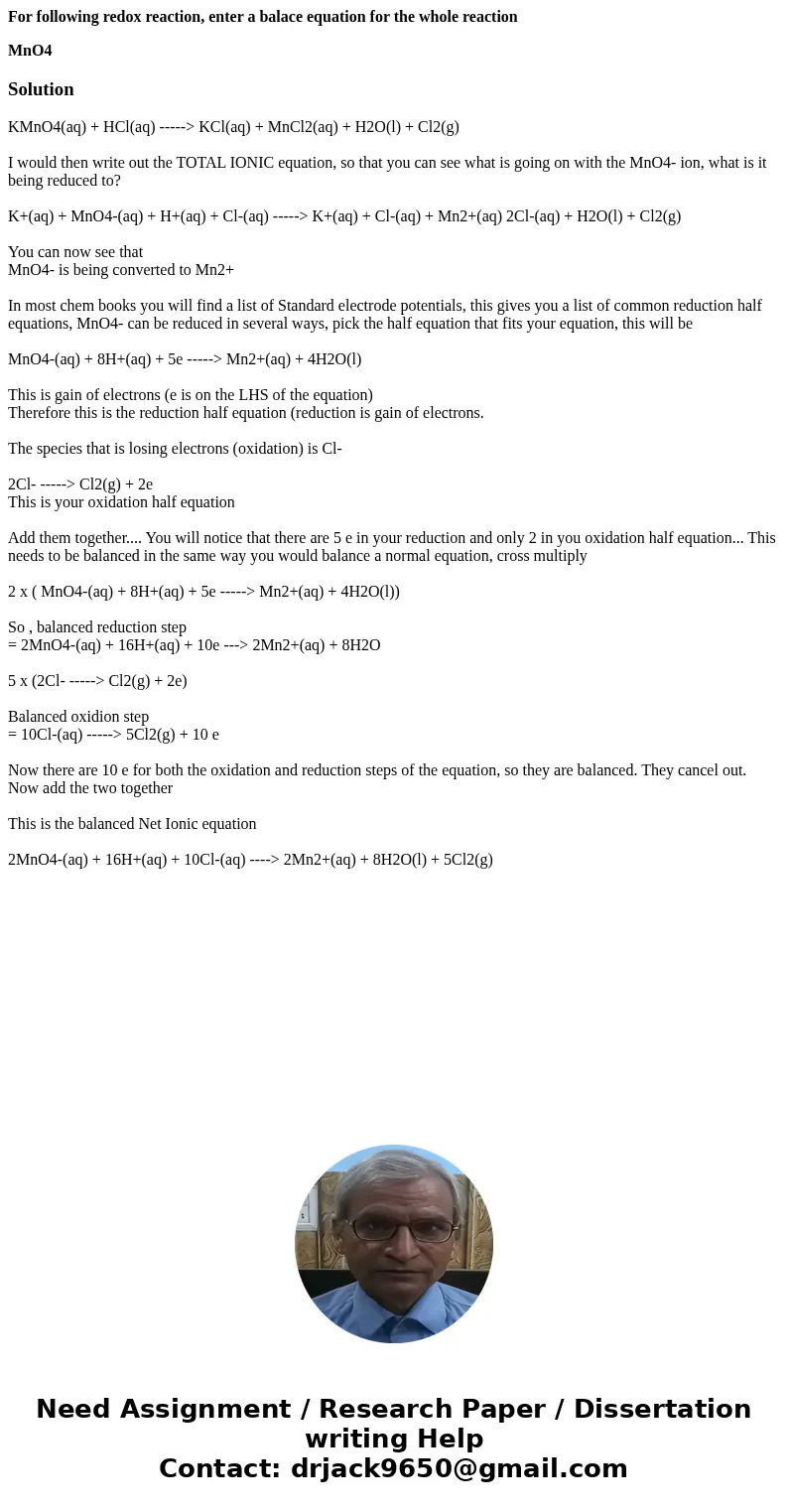For following redox reaction enter a balace equation for the
For following redox reaction, enter a balace equation for the whole reaction
MnO4
Solution
KMnO4(aq) + HCl(aq) -----> KCl(aq) + MnCl2(aq) + H2O(l) + Cl2(g)
I would then write out the TOTAL IONIC equation, so that you can see what is going on with the MnO4- ion, what is it being reduced to?
K+(aq) + MnO4-(aq) + H+(aq) + Cl-(aq) -----> K+(aq) + Cl-(aq) + Mn2+(aq) 2Cl-(aq) + H2O(l) + Cl2(g)
You can now see that
MnO4- is being converted to Mn2+
In most chem books you will find a list of Standard electrode potentials, this gives you a list of common reduction half equations, MnO4- can be reduced in several ways, pick the half equation that fits your equation, this will be
MnO4-(aq) + 8H+(aq) + 5e -----> Mn2+(aq) + 4H2O(l)
This is gain of electrons (e is on the LHS of the equation)
Therefore this is the reduction half equation (reduction is gain of electrons.
The species that is losing electrons (oxidation) is Cl-
2Cl- -----> Cl2(g) + 2e
This is your oxidation half equation
Add them together.... You will notice that there are 5 e in your reduction and only 2 in you oxidation half equation... This needs to be balanced in the same way you would balance a normal equation, cross multiply
2 x ( MnO4-(aq) + 8H+(aq) + 5e -----> Mn2+(aq) + 4H2O(l))
So , balanced reduction step
= 2MnO4-(aq) + 16H+(aq) + 10e ---> 2Mn2+(aq) + 8H2O
5 x (2Cl- -----> Cl2(g) + 2e)
Balanced oxidion step
= 10Cl-(aq) -----> 5Cl2(g) + 10 e
Now there are 10 e for both the oxidation and reduction steps of the equation, so they are balanced. They cancel out. Now add the two together
This is the balanced Net Ionic equation
2MnO4-(aq) + 16H+(aq) + 10Cl-(aq) ----> 2Mn2+(aq) + 8H2O(l) + 5Cl2(g)

 Homework Sourse
Homework Sourse